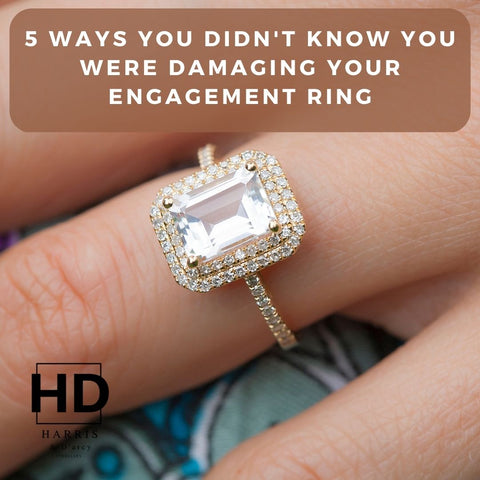5 Ways You Didn’t Know You Were Damaging Your Engagement Ring.
Posted by Shabier Harris on
5 Ways You Didn’t Know You Were Damaging Your Engagement Ring.
An engagement ring is very special and symbolizes a new beginning and the promise of “forever”, and while many would take this opportunity to showcase the gorgeous piece that their partner gave them, you could be damaging your ring – without even realizing it.
Here are 5 ways you could be damaging your engagement ring! Take note!
1. You exercise with it on: building muscle in the weight room won’t be the only thing making you sweat when you realize that the weight bar has been bending your ring. And while you may think it’s “not that bad” – jewelry repairs can become costly so rather leave your engagement ring in your locker.
2. You wear them when cleaning the house: there is a strong possibility that wearing your ring while using household cleaners such as bleach and other common chemicals may erode alloys in precious metals.
3. Swimming with it in chlorine can have a serious effect on metals such as gold or platinum.
4. You use common hacks to clean it: believe it or not, you shouldn’t believe Karen when she says she uses Bleach to clean her engagement ring. Or even Google for that matter. The safest way to ensure that your ring is cleaned is to take it to a professional jeweler to have it cleaned once a year or every 6 months.
5. You wear it when you apply hand sanitizer: the pandemic changed everyone’s lives and even got us sanitizing every few minutes out of habit. The chemicals in hand sanitizer unfortunately have the possibility of making your stones lose their sparkle and can break down metals over time. Be sure to remove your ring and have your hands completely dry before putting back on your engagement ring.
Got questions? Or want to send your jewelry for cleaning? Pop by our kiosk or email us.

